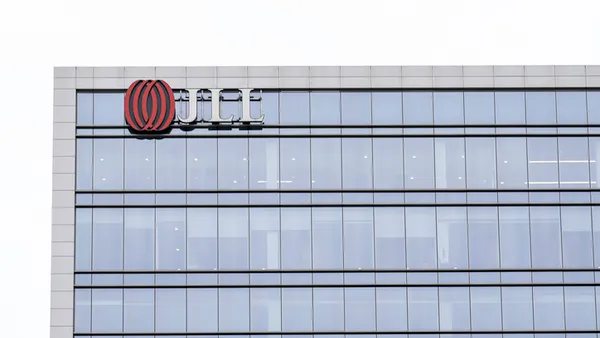Facilities management has moved away from the 1970s archetype of a janitorial and caretaking service relegated to building maintenance, cleaning and plumbing. Today’s facilities managers are increasingly being viewed as suit-clad professionals leveraging sophisticated dashboards and AI-powered platforms to make critical business decisions. Five prominent themes for building management and operations emerged at the NFMT Remix Conference in Orlando last week.
Decarbonization
As part of a push to net-zero emissions targets by 2050, the industry is seeing an influx of regulations from federal, state and local entities. These include the U.S. Securities and Exchange Commission’s pending climate disclosure requirements, New York’s Local Law 97, Maryland’s Building Energy Performance Standards and California’s climate disclosure bills. At a session on decarbonization, Ronak Shah, senior energy analyst at InSite, said key steps facilities managers can take to become compliant with decarbonization regulations include gathering facility data, establishing baselines, tracking key performance indicators, setting emissions reduction targets, developing action plans and seeking rebates from local utilities.
Energy efficiency
Against the backdrop of a steady transition from gas-powered to electric equipment, Daniel Mabe, CEO and president of the American Green Zone Alliance, pointed to the need for evidence-based decision-making when facilities managers choose electric equipment. “Electric is going to be much more expensive than your gas counterparts. But, if you choose the right platform, you can get a [return on investment] in less than two years,” Mabe said.
Emergency preparedness
Crisis response planning is another integral aspect of a facilities manager’s role in the event of disasters like hurricanes, winter storms and floods. Larry Sigler, director of food safety at Waffle House, shared key takeaways from his team’s experience navigating Hurricane Idalia, a category 4 hurricane that struck Florida in late August 2023.
“We prepare…before the hurricane season. We have meetings in the field and in our offices. We collect family information, so we have that before the storm. We get associates ready. We talk about where to evacuate people. We look at post-storm communication systems [and] prepare our restaurants for after the storm. We also prepare our small generators — we have approximately 15 of them,” Sigler said. The company has a corporate office-based support team that works with vendors to supply restaurants before a storm, he added.
As a measure of storm severity, the restaurant chain has also introduced the Waffle House Index, which states that storm damage is likely minimal if a Waffle House is open and serving a full menu, as indicated by a green zone. A red zone indicates that a Waffle House is closed because the area is severely affected. Drawing from his team’s experiences, Sigler recommended that facilities managers keep equipment on hand, liaise regularly with supply chain teams and use tracking software for crisis response planning. Sigler also recommended that facilities managers collaborate with local officials and authorities on issues of employee safety, evacuation planning and other logistical hurdles.
Emerging technology trends
ChatGPT is increasingly unleashing its power on facilities management, Premise HQ co-founder and CEO Rafi Dowla noted at another session. “Enhancing efficiency, reducing cost and improving tenant satisfaction are among the areas we feel ChatGPT can help facilities managers, while reducing risk and providing competitive advantage,” Dowla said. Dowla recommends that facilities managers consider a data pipeline strategy that factors in how they process data and integrate that with ChatGPT. Dowla additionally recommended that facilities managers work with an AI expert who can help design the process of AI integration in a way that is scalable and portable.
Digital twins — a virtual representation of a physical space — and integrated workplace management systems are other aspects critical to facilities management technology, said Peter Costanzo, director of ROI Consulting Group. Costanzo pointed to the role of various sensors in optimizing energy use or detecting issues with existing equipment like HVAC units. “All sorts of innovation are happening,” Costanzo said.
Strategic facilities assessment and benchmarking
Facilities condition assessment covers IT infrastructure, physical asset evaluations and space utilization. Anand Sankey, director of maintenance services at Western Michigan University, said persuading leadership to invest in a facilities condition assessment and having a champion at the leadership level — along with dedicated facilities staff — is crucial. Sankey also pointed to the need for benchmarking energy usage against peer institutions while considering metrics like density, technical complexity, operational expenses and energy costs.














